Home > Auctions > 9 - 17 September 2025
Ancient Art, Antiquities, Books, Natural History & Coins
Franz Heger (1853-1931), Austrian traveller and ethnographer, acquired in the Caucasus during his 1890 expedition.
Believed to have been gifted circa 1930 to Franz Hancar (1893-1968), noted scholar and expert in ancient Caucasian cultures.
Thence by descent, acquired in the 1950s by Mr R.D., Vienna, Austria.
Acquired from the above in 1998 by N.M., former Israeli Ambassador to Austria (1998-2000).
Accompanied by an academic report by Dr Raffaele D'Amato.
This lot has been checked against the Interpol Database of stolen works of art and is accompanied by a search certificate number no.12840-240720.
This lot has been cleared against the Art Loss Register database, and is accompanied by an illustrated lot declaration signed by the Head of the Antiquities Department, Dr Raffaele D'Amato.
Cf. Gorelik, M., Weapons of Ancient East, IV millennium BC-IV century BC, Saint Petersburg, 2003, in Russian, see pl.XXII, no.34, from Caucasus (Koban type, Tliy burial ground), for similar.
Featured in Apollo Magazine, May 2019.
During the latter half of the 2nd millennium B.C., one type of axe head dominated in the region of the Eastern European steppes. It had a narrow horizontal blade, a short blade and a tube-shaped handle. Examples have been found across the steppes of Eastern Europe from Transcaucasia. From the middle of the second millennium B.C., the spread of the type in the Eastern Steppes was connected with the movement of Iranian-speaking nomads, maybe the Tocharo-speaking tribes, who used two-wheeled horse-drawn war chariots.
From the private collection of a London gentleman, from his grandfather's collection formed before the early 1970s.
Accompanied by an academic report by Dr Raffaele D’Amato.
This lot has been checked against the Interpol Database of stolen works of art and is accompanied by search certificate no. 12586-240319.
This lot has been cleared against the Art Loss Register database, and is accompanied by an illustrated lot declaration signed by the Head of the Antiquities Department, Dr Raffaele D'Amato.
Cf. Menghin, W., Das Schwert im Frühen Mittelalter, Stuttgart, 1983, p.335, for cloisonné on guard; Zasetskaïa, I.P., Kul’tura Kotchovnikov iujnorusskikh stepeï v gunnskuïu epokhu (Culture of the nomads of the southern Russian steppes in the Hun Era), Saint Petersburg, 1994; Lebedinski, I., Armes et guerriers Barbares au temps des grandes invasions IVème au Vième siècle après J.C., Paris, 2001, pp.117ff., swords from Loutchistoïé, Novohryhorivka, Bátaszék, Jakuszowice, Szirmabesényo, Ártánd, Horgos; Miks, C., Studien zur Römischen Schwertbewaffnung in der Kaiserzeit, I-II Banden, Rahden, 2007; Strassmeir, A., Das Fränkische Heer der Merowingerzeit, Teil 2 : Schild und Schwert, Berlin, 2019; Kazanski, M.M., Barbarians at the borders of the Eastern Roman Empire (in Russian), Simferopol, 2024, figs.7,12, pp.20, 23, p.31, pl.36, for similar cross-guards.
The sword is a Migration Period sword which usually had stones hanging from the pommel or hilt, like the one preserved here, which finds a parallel with the sword of Lord of Morken (Strassmeir, 2019, p.55, lett.G). This typology was widespread in Central Europe by the Huns and there are also specimens attested in Gaul and Spain in the 5th century.
From the private collection of a London gentleman, from his grandfather's collection formed before the early 1970s.
Accompanied by an academic report by Dr Raffaele D’Amato.
This lot has been checked against the Interpol Database of stolen works of art and is accompanied by search certificate number no.12784-240320.
This lot has been cleared against the Art Loss Register database, and is accompanied by an illustrated lot declaration signed by the Head of the Antiquities Department, Dr Raffaele D'Amato.
Cf. Kazakevičius, Балтские мечи IX-XIII вв. (Baltic Swords, 9th-13th century AD), Vilnius, 1996; Peirce, I., Swords of the Viking Age, Suffolk, 2002; Tomsons, A., ‘Symbolism of Medieval Swords from the territory of Latvia during the 11th-13th centuries’ in Acta Universitatis Lodziensis. Folia Archaeologica 29, Łódź, 2012, pp.145-161.
The Couronian swords of this type with animal head decoration were widespread and used in the Eastern Baltic lands from 10th to 13th century.
Acquired 1982 in Kaliningrad and transported to Riga in 1986, moved to East Berlin in 1988, and again to Germany in 2000, then UK in 2014.
Ex West London collection.
Accompanied by a copy of an Art Loss Register certificate no.S00141022.
Accompanied by an academic report by Dr Raffaele D'Amato.
This lot has been checked against the Interpol Database of stolen works of art and is accompanied by search certificate number no.12476-228759.
This lot has been cleared against the Art Loss Register database, and is accompanied by an illustrated lot declaration signed by the Head of the Antiquities Department, Dr Raffaele D'Amato.
Cf. Sedov, B.B., Finno-Ugri i Balti v Epokhi Srednevekovija, Moscow, 1987, pl.V (20), for type; Hjardar, K. & Vike, V., Vikings at war, Oxford-Philadelphia, 2016, p.163Y, for typology; Salin, B., Die Altgermanische Thierornamentik, Stockholm, 1935, for discussion about the ornaments.
From the private family collection of a lady, UK; acquired in Germany mid 20th century.
Accompanied by an academic report by Dr Raffaele D’Amato.
This lot has been checked against the Interpol Database of stolen works of art and is accompanied by search certificate number no.12787-240329.
This lot has been cleared against the Art Loss Register database, and is accompanied by an illustrated lot declaration signed by the Head of the Antiquities Department, Dr Raffaele D'Amato.
Cf. Oakeshott, R.E., The Archaeology of the weapons, London,1960; Oakeshott, E., The sword in the Age of the Chivalry, Woodbridge,1964 (1994); Oakeshott, E., Records of the Medieval Sword,Woodbridge,1991; Oakeshott, E., Sword in hand, London,2001 (2007); the most striking similar sample is the sword from the formerly collection of D’Acre Edwards (Oakeshott,1991, p.187).
Many swords of this type have long grips, like the war-swords of Type XIII. After about 1350, nine swords out of ten seem to have such grips, and are today variously referred to as 'Hand-and-a-half' or 'Bastard' swords. The latter term was used in the 15th century, but it is not certain that it was applied to this particular kind of weapon. 'Hand-and-a-half'', though modern, is a far more fitting name; these swords were single-handed weapons, but by being furnished with long grips, could at need be wielded easily in both.
From the private family collection of a lady, UK; acquired in Germany mid 20th century.
Accompanied by an academic report by Dr Raffaele D’Amato.
This lot has been checked against the Interpol Database of stolen works of art and is accompanied by search certificate number no.12788-240330.
This lot has been cleared against the Art Loss Register database, and is accompanied by an illustrated lot declaration signed by the Head of the Antiquities Department, Dr Raffaele D'Amato.
See Oakeshott, R.E., The Archaeology of the weapons, London, 1960; Oakeshott, E., Sword in hand, London, 2001; Oakeshott, E., Records of the Medieval Sword, Woodbridge, 1991; see also Aleksić, M., Mediaeval Swords from Southeastern Europe, material from 12th to 15th century AD, Beograd, 2007, cat. nos.260, pl.16,3.
The noteworthy element of this sword is its guard with the engraved crosses. The presence of the cross suggests that the sword once belonged to person belonging to a military order of chivalry. Considering that the Templars were already destroyed when the sword was made, the main candidates could be the Hospitallers or, most probably, the Teutonic Knights.
Discovered by P Macro at Happisburgh, Norfolk, UK, between Tuesday 1st October 2019 and Saturday 30th November 2019.
Ex collection of P James, South England.
Acquired directly from the finder.
From the private collection of an East Anglian, UK, specialist collector.
Accompanied by a copy of the British Museum's Portable Antiquities Scheme (PAS) report no.NMS-3A3691.
This lot is accompanied by an illustrated lot declaration signed by the Head of the Antiquities Department, Dr Raffaele D'Amato.
The site of Happisburgh in Norfolk has helped to push the history of inhabitation of the British Isles back by 200,000 years, making it a site of special importance.
Found Eure et Loire, Eaux de L’Avre, Columbies, France, in 1892.
Ex famous UK musician and amateur archaeologist, Victor Brox (1941-2023).
Acquired on the UK art market.
From the private collection of an East Anglian, UK, specialist collector.
This lot is accompanied by an illustrated lot declaration signed by the Head of the Antiquities Department, Dr Raffaele D'Amato.
Attributed to Homo Heidelbergensis.
Found Thames gravels, Kent, UK.
Acquired on the UK art market.
From the private collection of an East Anglian, UK, specialist collector.
This lot is accompanied by an illustrated lot declaration signed by the Head of the Antiquities Department, Dr Raffaele D'Amato.
Attributed to Homo Heidelbergensis.
From the well regarded long closed quarry site of St Meme, Charente, France.
From an old large Belgian collection.
Acquired on the European art market.
From the private collection of an East Anglian, UK, specialist collector.
This lot is accompanied by an illustrated lot declaration signed by the Head of the Antiquities Department, Dr Raffaele D'Amato.
Attributed to Homo Heidelbergensis.
Found Blanford, Dorset, UK.
From the collection of John Sharp, former well known archaeologist.
Acquired on the UK art market.
From the private collection of an East Anglian, UK, specialist collector.
This lot is accompanied by an illustrated lot declaration signed by the Head of the Antiquities Department, Dr Raffaele D'Amato.
The Ovate form is uncommon. Attributed to Homo Heidelbergensis.
Findspot 'Reuilly sur C.1927', France.
Ex M.M., Paris.
French art market, 2019.
This lot has been checked against the Interpol Database of stolen works of art and is accompanied by search certificate number no.12473-228700.
This lot has been cleared against the Art Loss Register database, and is accompanied by an illustrated lot declaration signed by the Head of the Antiquities Department, Dr Raffaele D'Amato.
169 - 180 of 3897 LOTS

.jpg)
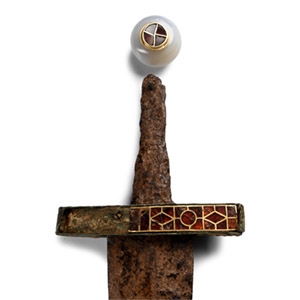
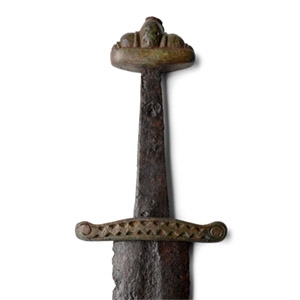
.jpg)
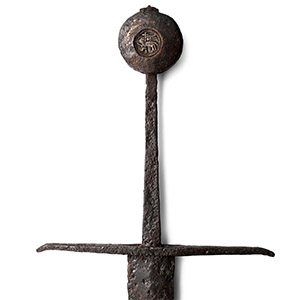
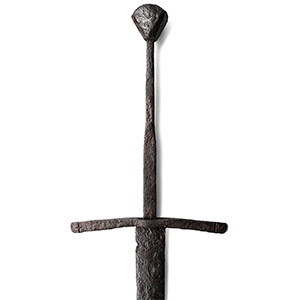


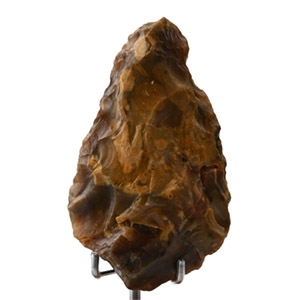

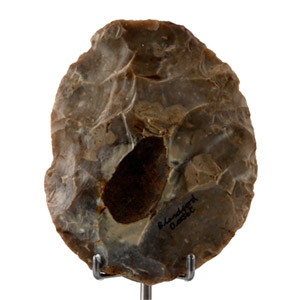
.jpg)



